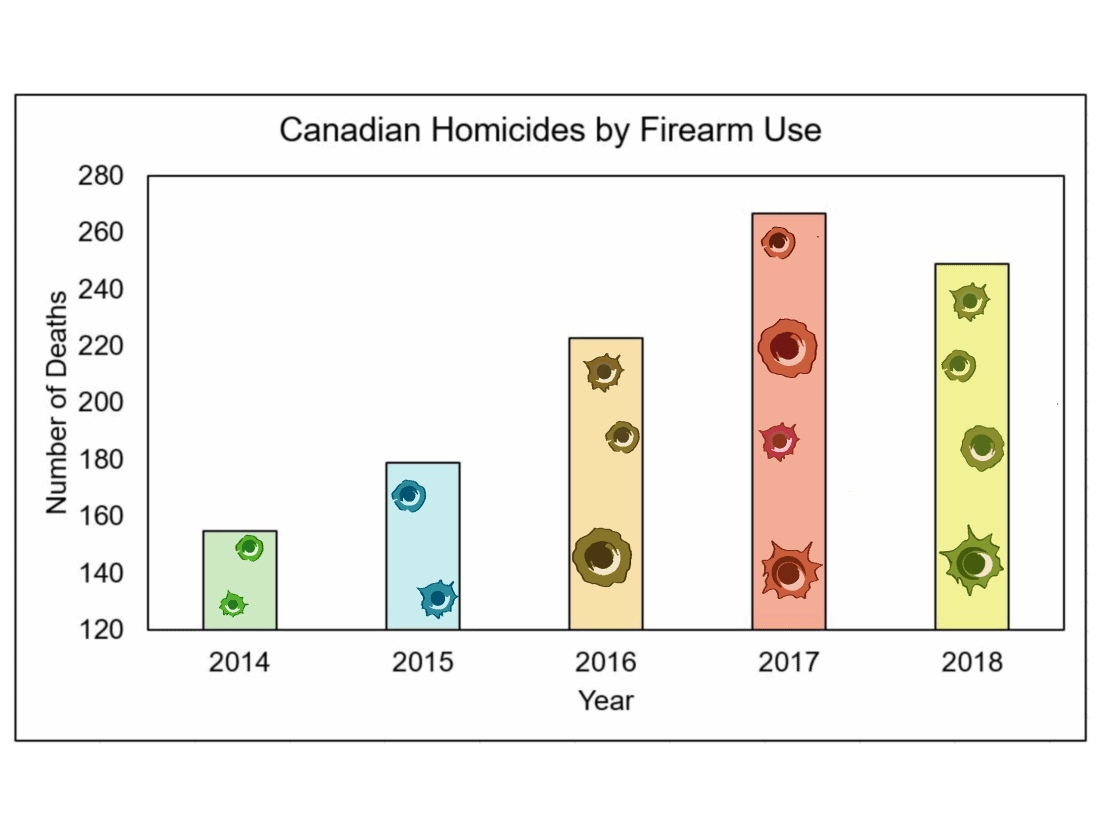
As gun violence increases in Canada, we should try to learn a lesson from the south — how the fear of being caught in a deadly crossfire can creep into and impact our daily lives.
On Sept. 18, the Sandy Hook Promise — an organization founded by families devastated by the 2012 elementary school shooting — released a profoundly disturbing video depicting children in panic fleeing from a gunman during a mass shooting titled “Back-To-School Essentials.”
The PSA shows a glimpse of the more dystopian aspects of United States where “bulletproof backpacks” are flying off store shelves and videos of crowds in New York City’s Time Square being launched into hysteria from a motorcycle backfiring.
The “home of the brave” is full of fear following the El Paso, Texas, and Daytona, Ohio, mass shootings this summer. Many Americans are experiencing a new anxiety provoked by simply being in public spaces. It’s a world where movie theatres, malls and schools don’t seem safe anymore.
Although Canada is blessed to not be plagued by the US’s mass shooting culture, Canadian gun related homicides have increased steadily since 2014. As shootings in Toronto hit a record high this summer, is it time to look towards where this dangerous path could be leading us as a nation?
Toronto’s 2018 Danforth shooting brought the terror home when a lone gunman opened fire in a Greektown neighbourhood, killing two and wounding 13 with a semi-automatic pistol that was illegally imported from the US.
Politicians have been quick to condemn Canada’s growing gun violence on gangs of criminals orchestrating isolated attacks on individuals with smuggled weapons. However, what street shootouts and mass shootings have in common is that they both take place in public spaces and inflict collateral damage on innocent civilians.
On Sept. 14, a 17-year-old high school student was killed after being caught in a crossfire outside his home apartment complex in Mississauga, Ont. — an attack that injured five others.
Because of fatal attacks like this, the grassroots organization Canadian Doctors for Protection from Guns have described Canadian gun violence as a public health concern the federal government should address.
But where are the handguns coming from? It would’ve been easy to continue blaming our southern neighbours when roughly 75 per cent of firearms confiscated by Toronto police in 2012 were imported from the US. But by 2017, about half came from domestic traffickers as the allure of high profits incentivises Canadians to get their license to sell their guns to the black market.
According to Statistics Canada, 55 per cent of firearmrelated homicides in 2017 were committed using a handgun. The CDPG and many others are urging politicians to limit the accessibility of guns, and cities like Toronto and Montreal have even proposed city-wide handgun bans.
While reducing firearm ownership remains a contested issue, I would argue that gun violence is not only a public health concern but also impacts how we use public spaces. Events like a prop
paper-mache gun causing alarm at the University of Calgary show Canadians developing awareness towards the potential danger of being shot in public places.
The U of C’s reaction was not irrational when you consider that the following day a gunman started shooting in the parking lot of the CrossIron Mills shopping mall, just north of Calgary. The assailant fled with an accomplice in a vehicle, and fortunately, only injured one person in what is believed to be a targeted gang attack.
Whatever your position on firearm ownership is, it is important that we recognize, as a country, how rising gun violence only hurts innocent people. If we don’t take these atrocious acts seriously then we move closer to becoming a place where people fear going to school or the mall — which is a country I don’t think any Canadian wants to live in.
—
Noah Callaghan/ Staff Writer
Graphic: Shawna Langer/ Graphics Editor